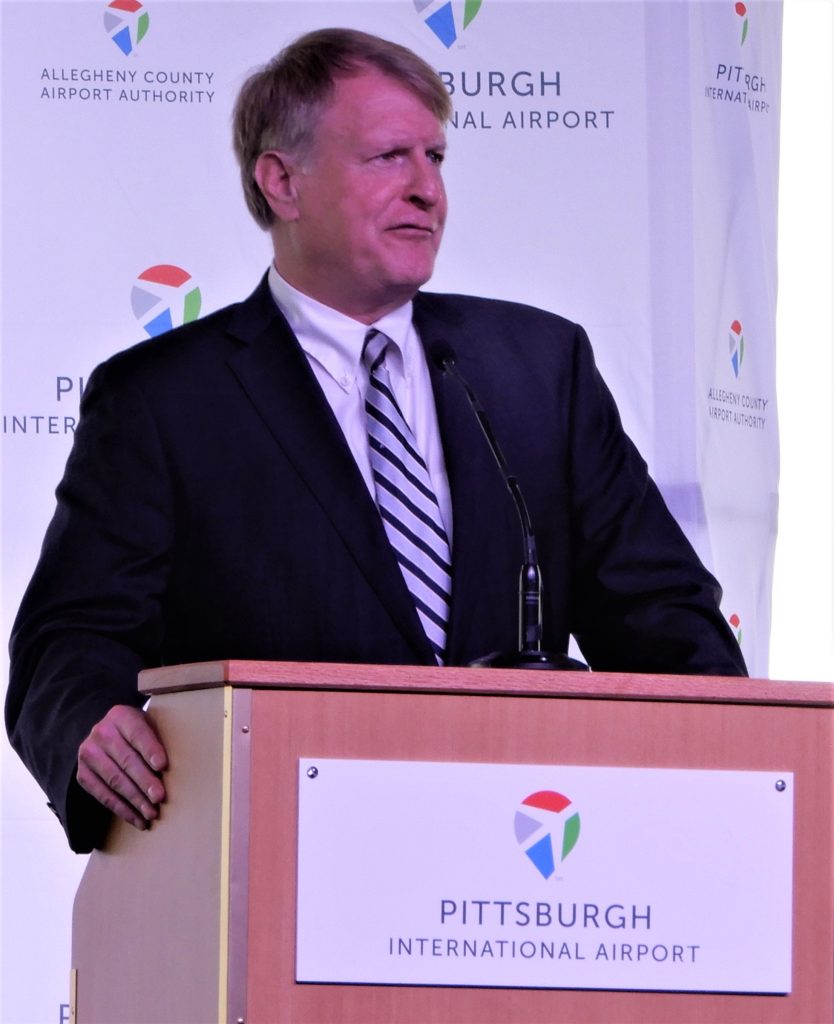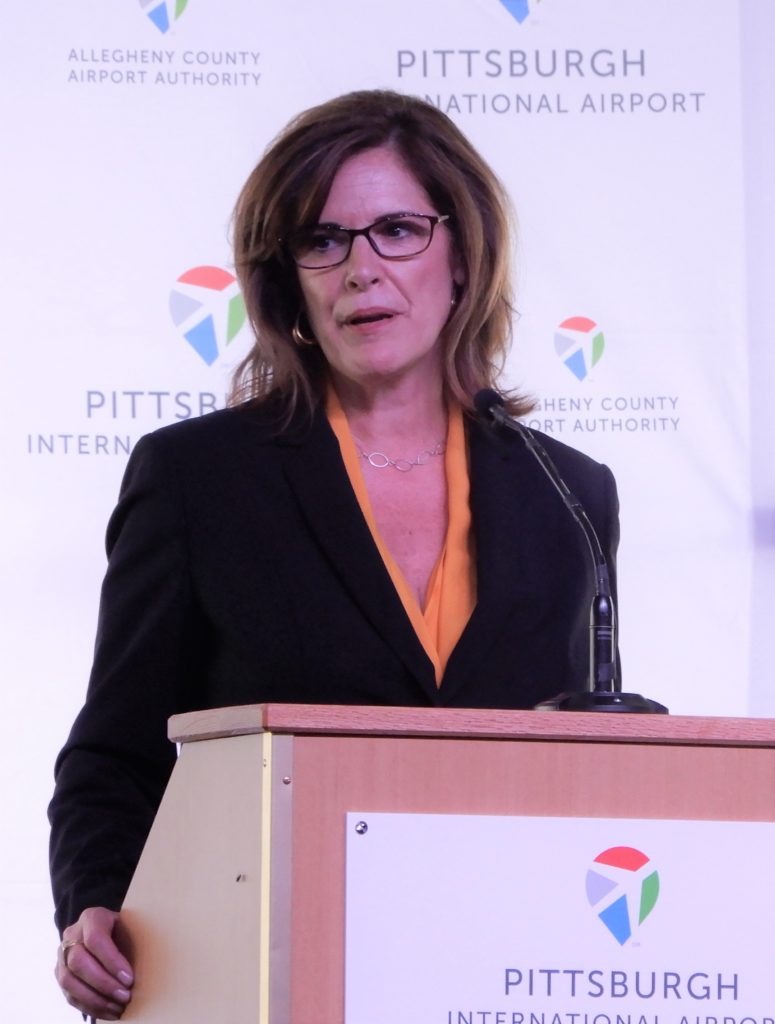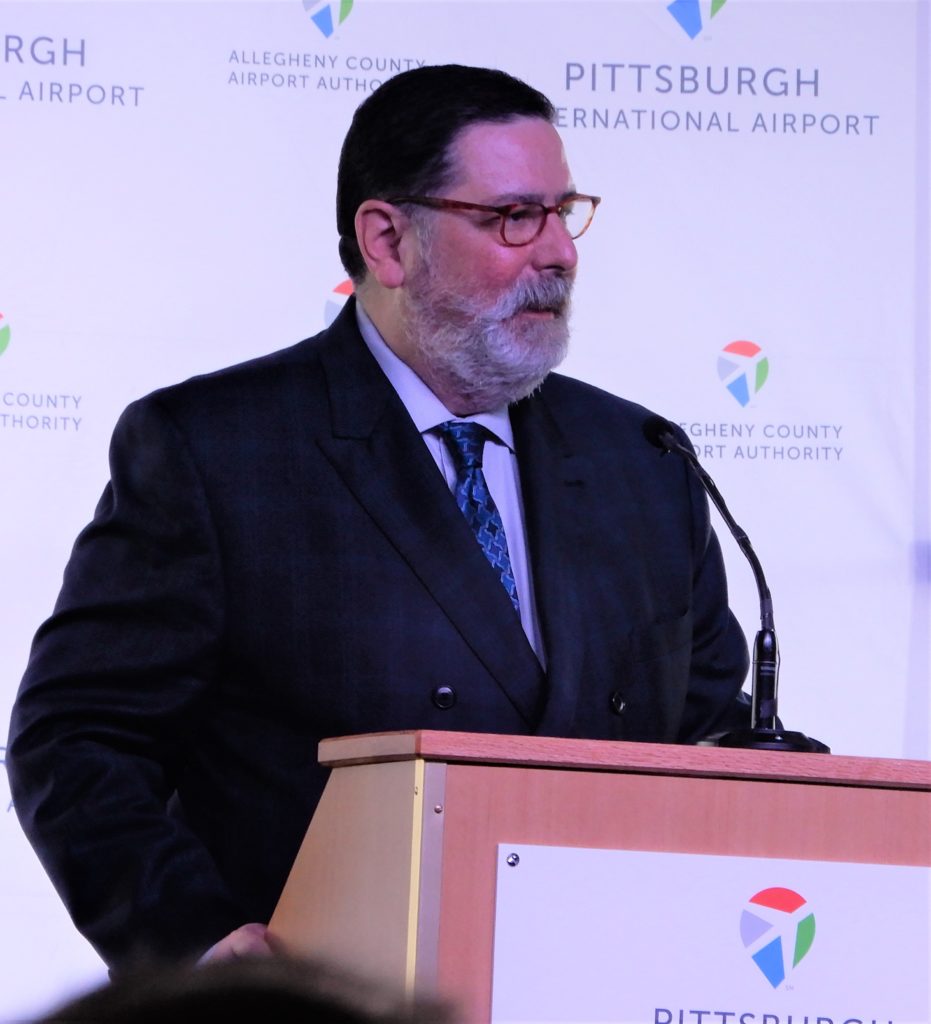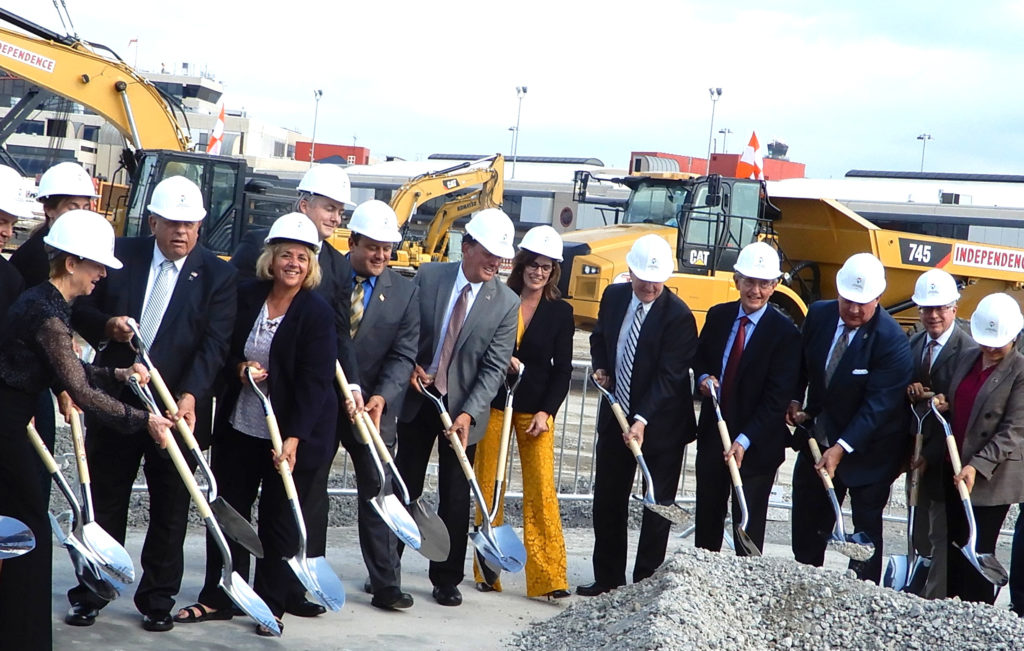The Pittsburgh International Airport, owned and managed by the Allegheny County Airport Authority (ACAA), is getting a much-needed modernization. On Thursday October 14, 2021, ACAA formally broke ground at the construction site for a new terminal. County Executive Rich Fitzgerald, the ACAA’s CEO Christina Cassotis, its chairman David Minnotte, and Pittsburgh’s Mayor Bill Peduto, among others, addressed a gathering of over 300 people — the region’s elected officials, business and labor leaders, contractors, and invited guests.
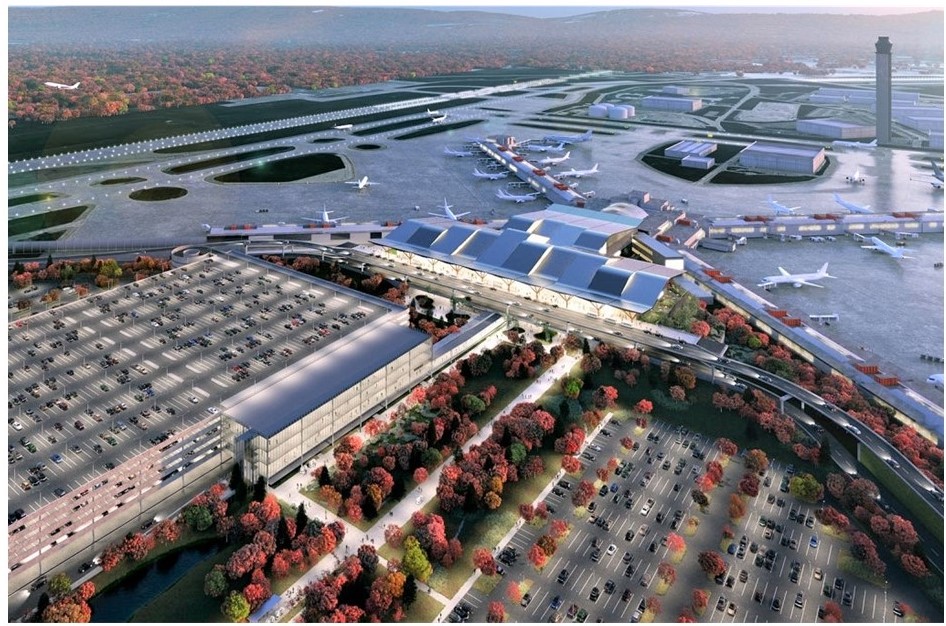
One point in Fitzgerald’s speech was encouraging: after losing population for the last six decades, Allegheny County’s population increased in the 2020 census. It is now 1,250,000, up by 2.2% (or 27,000), compared to the 2010 census. And the county population is more diverse (24% in 2020 compared to 18% in 2010), and younger, the features recognized as catalysts for growth.
The current layout of Land- and Air-side Terminals with 75 gates in four concourses, and a 0.5 mile-long connecting train, is too unwieldy, too old (opened in 1992) and too costly for upkeep for the 170-plus daily flights today. At its peak two decades ago, the airport handled nearly 700 daily flights with 20 million passengers/year passing through its gates.
The new terminal will meet its current and future needs; will reduce operating costs and carbon footprints; will give better ambience for departing passengers from check-in, security through boarding; and for arriving passengers from landing, baggage claim through leaving the airport.
How we ended up with 75 gates in four concourses: In the 1980s, with US Airways’ hub expanding at the Pittsburgh airport, the number of passengers passing through its gates increased rapidly. Most were transit passengers changing flights to reach their final destinations. So, the then state-of-the-art terminal with 75 gates in four concourses was built in 1992 to meet the airline’s demands.
Then the 9/11 disaster in 2001 devastated the airline industry. Meanwhile, US Airways was expanding its presence in Philadelphia. When US Airways closed its PIT hub (and moved to Philadelphia), the volume of passengers at the Pittsburgh airport plummeted to just over 6 million per year. Over 15,000 jobs vanished in the region. This devastated the airport’s operations and the region’s image, even as we were struggling to recover from the steel industry’s death here in the 1970s.
Ironically, we learned the same bitter lesson twice: overdependence on steel devastated the region when the Mighty Steel died in the 1970s, and over dependence on US Airways (accounting for over 85% of flights at its peak at PIT) devastated the airport when it closed its hub here.
Besides, before shutting down its hub, the bad faith in which US Airways had negotiated with our region’s elected officials and airport officials left deep scars. So, not many at ACAA and among our elected officials wanted the airport again to become a big hub for another air carrier. Twice bitten, thrice shy. So, seeking regional taxes to fund airport modernization was just out of question.
Then came Nature’s boon in the form of Marcellus shale found in abundance in Pennsylvania, West Virginia and eastern Ohio. The shale lying between 5000 to 8000 feet underground is a source for natural gas, a clean energy fuel for domestic & industrial use and electric power generation — it has the smallest carbon footprint and no solid waste products such as fly ash, as with coal. Radio talk show hosts boast that natural gas for Pennsylvania is what is petroleum is for Saudi Arabia.
Over 9000 acres of land around the airport belong to ACAA. The airport allowed a local gas company to drill 45 gas wells in its land to generate revenue for the next several decades. With the natural gas running five generators and 10,000 solar panels already installed, the airport’s microgrid generates 20 MW of power while its needs are only 14 MW. (source: www.tinyurl.com/Microgrid-at-PIT).
Meanwhile, the Pittsburgh region slowly has redefined itself in terms of financial service companies, higher education, innovative technologies (robotics and AI), as an incubator for startups, and healthcare industries. Along the way, the Pittsburgh airport too grew. From barely 70 daily flights after the US Airways shut down to over 170 daily flights today; from just over 6 million passengers/year at its nadir to over 9 million passengers/year now; from just under 10 air carriers to 17 air carriers at PIT now with more nonstop flights to more cities. The airport’s freight handling too has increased over the years.
Deciding not to seek funds from local taxes, ACAA took the plunge to modernize the airport terminal with its own resources. The work started as early as 2017, but the 2020 Covid pandemic stalled the work.
With the fear of the Covid-19 receding, the 4-year, $1.4 billion modernization project has started. Its main features as detailed by Messrs. Fitzgerald, Cassottis, and Minnotte in their speeches are:
1. The project is funded without local taxes. The businesses that use the airport — the airlines who use the airport (landing fees and gate rentals), the concession shops at the terminal, and passengers using the facility will bear the cost. The funds will be raised through bonds issued by ACAA on its own strength. (Note: For the same reason, if the modernization results in a resurgence of the airport’s fortunes generating good net incomes year after year, one wonders whether ACAA will be obligated to fund projects outside the airport — such as a light rail transit from the airport to the city. And passengers will see increases in parking fees and charges for food and drinks at the airport — as in airports in New York, Chicago…)
2. The land-side terminal and the People Mover train will be gone (see the picture on the cover page), and the air-side terminal will be refurbished with new check-in counters and a baggage handling facility and passenger pick-up systems.
3. The modernization is for the region’s current and future travel needs, and not for making the airport a big hub for another air carrier. (Bad experience with US Airways and the good olde grandmotherly advice not to put all your eggs in one basket).
4. The existing concourses will be retained and refurbished, but with fewer gates with better ambience. More concession stands and shorter times for passengers to reach departure gates and retrieving baggage on arrival.
5. A multilevel parking lot walkable from the baggage claim area.
6. State-of-the-art design using natural light, fresh air, attractive ambience, open space, and for mass transit, taxis and passenger pickup… …
7. Recycling 75% of the demolition debris from the existing structures (such as concrete slabs) and re-using them for construction.
8. Childcare services during construction on site for the hundreds of men and women working there. Workplace safety from the get-go.
9. Over 14,000 direct/indirect jobs created by contractors and subcontractors with taxes in millions of dollars feeding into local governments.
In 2025, we will be in for a grand dedication ceremony for a stunningly ultramodern reincarnated airport terminal. And also be ready for higher charges for all services such as parking fees, baggage carts, and all concessionaires at the airport terminal. ∎ END

